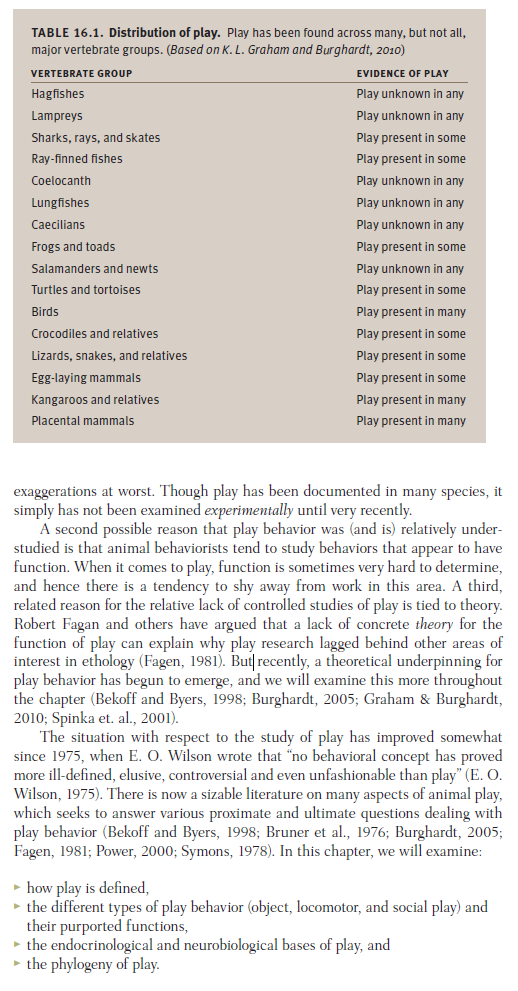Play
Why do animals play? Play has been described in animals as diverse as reptiles, birds and mammals, so what benefits does it provide and how did it evolve? Careful, quantitative studies of social, locomotor and object play behavior are now beginning to answer these questions and to shed light on many aspects of both animal and human behavior.
Bekoff, Marc, and John A. Byers, eds. Animal Play: Evolutionary, Comparative, and Ecological Prespectives. Cambridge: Cambridge University Press, 1998.
Burghardt, Gordon M. The Genesis of Animal Play: Testing the Limits. Cambridge, MA: MIT Press, 2005.

Dugatkin, Lee Alan. Principles of Animal Behavior. 3rd ed. 2004. Reprint, New York: W. W. Norton, 2013.
Animal Play
"To return to our immediate subject: the lower animals, like man, manifestly feel pleasure and pain, happiness and misery. Happiness is never better exhibited than by young animals, such as puppies, kittens, lambs, &c., when playing together, like our own children. Even insects play together, as has been described by that excellent observer, P. Huber, who saw ants chasing and pretending to bite each other, like so many puppies." (Charles Darwin, The Descent of Man and Selection in Relation to Sex)
Fagen, Robert. Animal Play Behavior. New York: Oxford University Press, 1981.
Galpayage Dona, Hiruni Samadi, Cwyn Solvi, Amelia Kowalewska, Kaarle Mäkelä, HaDi MaBouDi, and Lars Chittka. ‘Do Bumble Bees Play?’ Animal Behaviour 194 (2022): 239–51. https://doi.org/10/gq44wc.